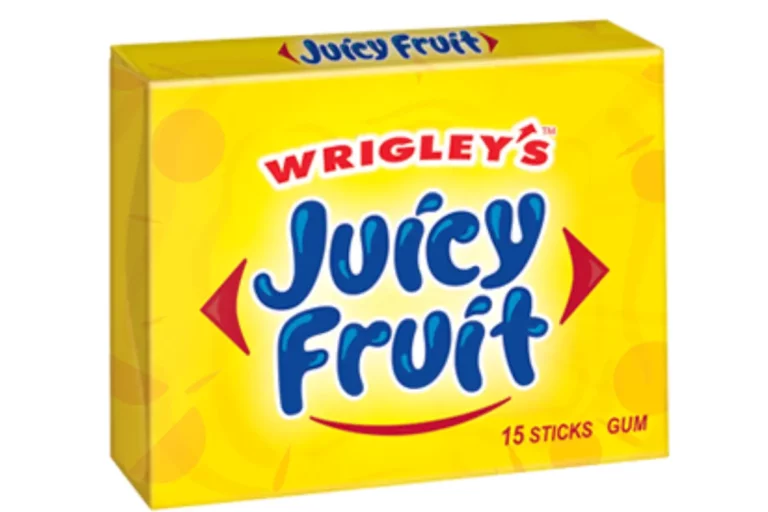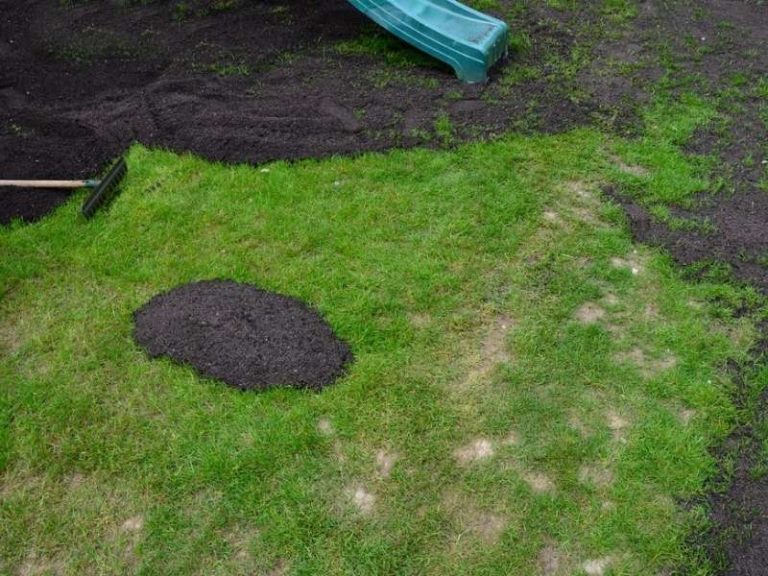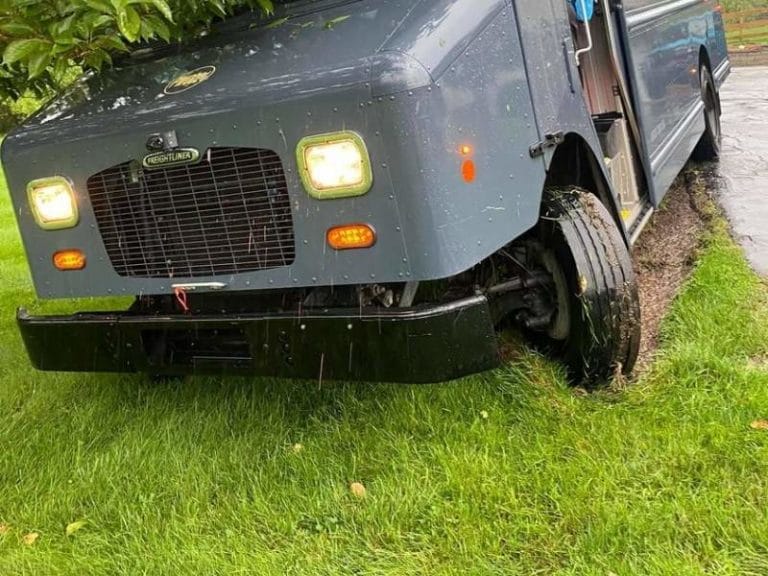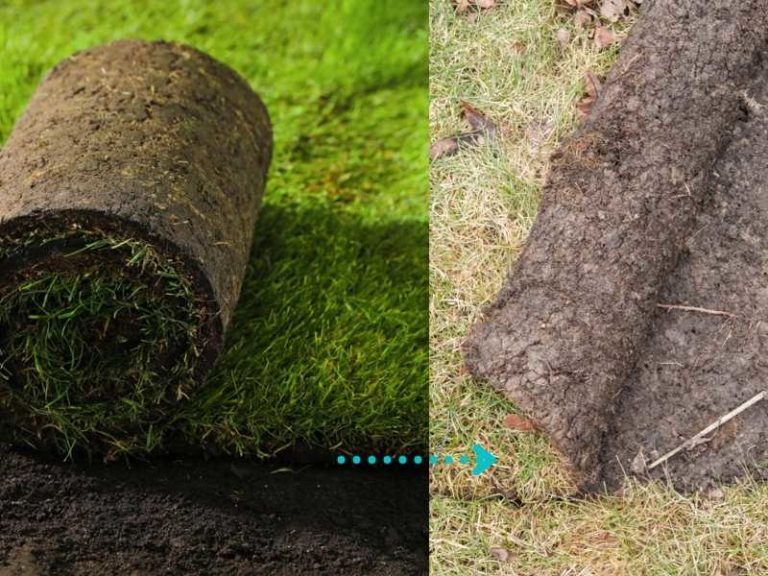Should You Water Your Lawn After Applying Fungicide?
When you see those brown patches due to lawn fungus, the first thing that comes to mind is applying a fungicide to get rid of the infection. But, depending on the type of product you’re applying, you may or may not need to water the lawn for the best results. So, should you water in fungicide?
Avoid watering your lawn for at least 24 hours after applying a contact fungicide to prevent washing away the protective layer of the treatment from the leaves of the grass. You can, however, water the lawn after spraying a systemic fungicide to aid in getting rid of lawn root rots.
Scotts Diseases Ex should be watered down lightly after application, and you can apply it just before a light rain. Always read product labels to determine the right amount of fungicide to use, mixing ratios and irrigation requirements.
Should you water your lawn after applying fungicide?
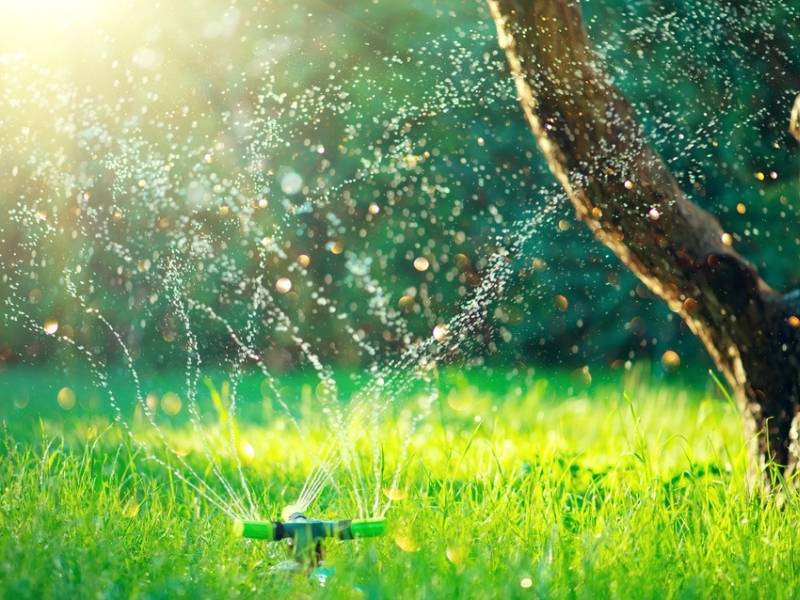
Watering a lawn after applying fungicide depends on the type of fungicide you’re using. It’s recommended to water down systemic fungicides into the soil for uptake by grass. Do not water your lawn after application for contact fungicides, but you may need to apply on wet grass. Read the label for proper instructions.
In short, there are two types of fungicides you need to know:
Systemic Fungicides
A systemic fungicide is an anti-fungal chemical that penetrates plant surfaces to treat the infection from the inside out. When applied, it is taken up through the roots, leaves, and stems.
The rule of the thumb is to water down systemic fungicide, so you’ll need to irrigate your lawn as soon as you put down the treatment. Be careful not to apply too much water because the chemical will leech too deep into the soil, where roots will not be able to access it.
Once absorbed by the grass, systemic fungicides cannot be removed by water or degraded by sunlight. Therefore, allow enough time before watering your lawn post-application.
Systemic fungicides typically have curative abilities as well as preventive properties. As such, a systemic fungicide will have a prolonged residual activity as opposed to contact fungicides.
Contact Fungicides
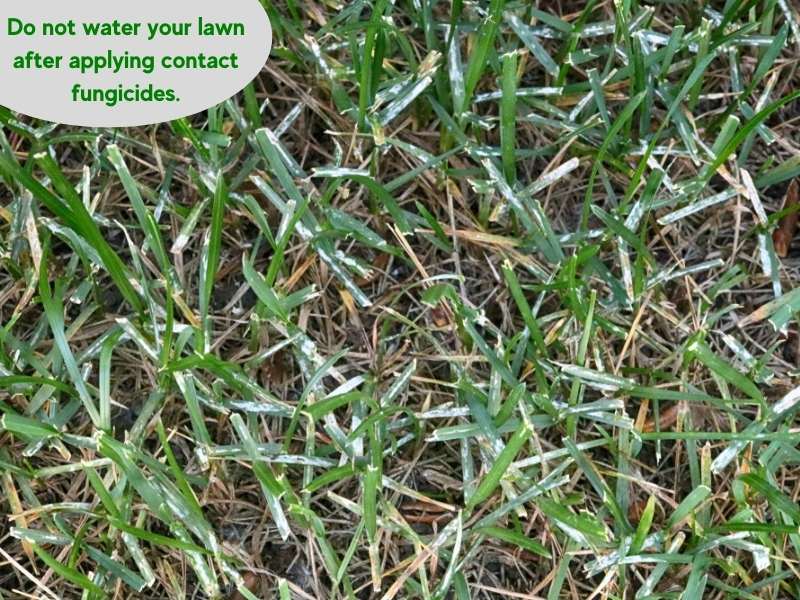
Contact fungicides are chemicals that act on the stem and leaf surfaces. Most of them are preventive and should be applied well in advance to inhibit brown patch disease and other turf fungi from growing and spreading.
Do not water your lawn after applying contact fungicide. Allow a few days before irrigating the lawn to prevent breaking down and washing off the fungicide into the soil.
Contact fungicides are best suited for diseases such as brown patch disease in St. Augustine grass, Bermuda, and other turfgrasses, while systemic treatments are best for root rot.
The best practice is to apply lawn fungicide when it is absolutely necessary. Brown patch disease in your neighborhood does not mean it will automatically spread to your lawn.
However, it is important to take preventive measures and apply fungicide in the summer, following the label directions for the best results.
Pro tip:
If the fungicide you’re using should not be watered in and your lawn needs watering, irrigate at least 24 hours before applying fungicide to avoid washing it off the leaf blades. The same should be done for mowing to avoid cutting the grass before applying a fungicide.
Always allow a maximum time interval between the fungicide application and the next lawn care and maintenance operation.
Can you apply fungicide on wet grass?
You can apply some fungicides, such as Fame Granular Fungicide, on wet grass. For such treatments, lightly water your lawn beforehand so that the fungicide sticks to the blades of the grass when you apply it. The water or dew improves the contact action of the treatment for effective control.
- Do not water down contact fungicides after spreading them.
- Systemic fungicides are sprayed, so there’s no need to wet the grass before applying them.
- Most contact fungicides are not water-soluble and stick to grass blades and stems for action.
Keep in mind that wet grass provides a conducive environment for the growth and spread of fungus in turfgrass. You shouldn’t even mow grass when wet because you’ll spread the fungus all over your lawn.
Do you need to water in Scotts Disease Ex?
Scotts Disease Ex is a granular fungicide that should be watered in after applying. Water the lawn lightly after putting down Scotts Disease Ex as recommended on the label. However, avoid heavy watering because too much water can wash away the fungicide.
Being a contact anti-fungal treatment, heavy watering will break down and wash down Scotts Disease Ex granules, sending all of it into the root zone yet it is needed on the leaf blades and stems.
Reapply Fungicide After it Rains
So, you’ve applied your fungicide, but suddenly, it rains and washes it down; what should you do?
Since fungicide needs to remain on the surface of grass leaves to be effective, you will have to reapply the treatment to eliminate brown patch disease effectively.
Heavy rains tend to wash fungicide residue off of grass blades. If there’s heavy rainfall less than an hour after applying fungicide, the treatment will be rendered ineffective.
According to Lenny Well, a Professor of Horticulture and Extension at the University of Georgia, “Rainfall that occurs less than one hour after spraying makes the fungicide pretty well ineffective. Any rainfall within 24 hrs after spraying with a pure protectant will likely reduce the effectiveness of control to some extent.”
READ NEXT: Can You Mow Wet Grass? What’s the Effect?
Sources + References
- Lenny Wells, University of Georgia: How Long Does Your Fungicide Need to Be On Before the Rain?
- M. L. Elliott and P. F. Harmon, University of Florida, IFAS Extension: Turfgrass Disease Management
- Paul Vincelli, University of Kentucky: Chemical Control of Turfgrass Diseases 2017

